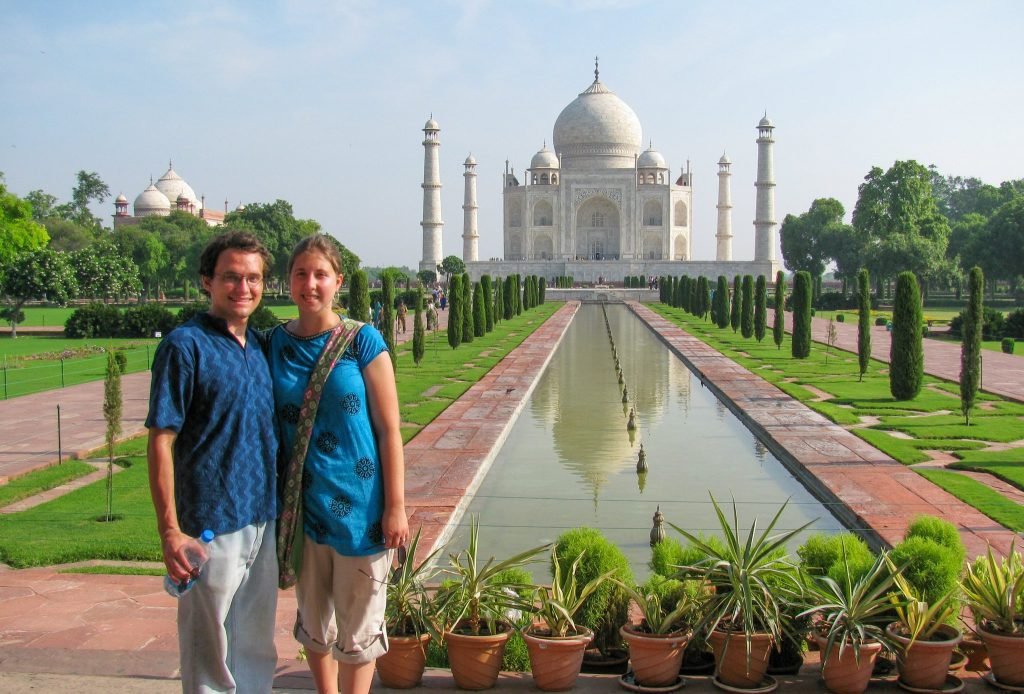The Garden of Heaven idea was imported from Persia by the Mughals as the Timurid Garden. They were the primary engineering articulation of the new domain made on the Indian subcontinent, and they satisfied different capacities with solid representative implications.
Also you like to read How many days should you stay in Agra to see all the sights?
“The style of garden found inside Taj Mahal complex is Persian Timurid. Babur brought the concept of paradise garden. According to Islamic belief, a paradise will have four rivers and a lush garden.”
Worked by sovereign Shah Jahan in 1631 in memory of his third spouse who passed on during labor, the Taj Mahal is a superb and all around kept white marble sepulcher situated in the town of Agra in India and is viewed as a world legacy site.
The Taj Mahal is a dazzling illustration of Mughal design that uses a style joining components of Persian, Turkish, and Indian engineering, and is perceived worldwide as a delegated image of Muslim craftsmanship in India.

Short note on Mughal Garden
The imagery of these nurseries is gotten from mysterious Islamic texts portraying heaven as a nursery loaded up with bountiful trees, blossoms, and plants, water assuming a key part: In Paradise (as per Islam) four streams stream from an essential issue, on the mountain. In their optimal structure, they are organized in a square isolated into four equivalent parts. These streams are frequently addressed in the Mughal gardens (charbagh) by shallow directs isolating the nursery in four sections and whose viewpoints follow the cardinal focuses.
“The detail of the Taj Mahal gardens is incredible, and the overall symmetry and harmony are astounding.
The trenches are a portrayal of the guarantee of water, milk, wine, and honey. In the focal point of these nurseries, at the convergence of the divisions, there is the principle structure or, on account of the Taj Mahal, a bowl denoting the holiest spot of the spot. In the extremely extraordinary instance of the Taj Mahal, this structure has been deferred in the nursery and supplanted by a lake. The burial places of Humayun, Akbar, and Jahangir, the past Mughal sovereigns, follow this example.
The cross-molded pivotal nursery likewise observes points of reference inside Southeast Asia tracing all the way back to the fifth century where the Royal Gardens of Sigiriya (presently Sri Lanka) have been organized in basically the same manner.

The nurseries of the Taj Mahal are four in number in light of the fact that, as shown above, they structure an ideal square partitioned into four channels addressing the four streams of Paradise, channels arranged towards the four cardinal focuses.
“The 300 by 300 meter Taj Mahal gardens is based on geometric arrangements found in nature and combines flowers, fruits, birds, leaves, symmetry.”
The square is 300m wide. The focal part is exceptionally emblematic, here it is made out of a porch and a huge marble wellspring. Every area is partitioned into 4 completely straight auxiliary streets, outlining 16 yards once in a while spotted with blossoms, trees, forests impeccably controlled. In this, they look like French nurseries, a long way from what the future English intruder can offer.
Yet, the story will make a connection between various periods since the Mogul garden model was imported toward the start of the sixteenth century by Bâbur, it was an Islamic model with a Persian inclination. This model comprised of making the nurseries more rectilinear, organized, to rejuvenate nature. This is by and large what the French did in the eighteenth century, in spite of the fact that they were not compelled by strict impacts, which was the situation for the Mughals.

In any case, toward the finish of the nineteenth century, the British assumed responsibility for the Indies, adequately ousting the Mughal administration made by Babur four centuries sooner. For those who had gardens imitating nature, it would have been generally expected that they change that of the Taj Mahal yet it was not the situation.
From one perspective in light of the fact that by doing this, they would undoubtedly have had the nearby populace back, and afterward on the grounds that the English nurseries recreate nature yet doptée, whose structures are controlled, which at last was not really a long way from that of the soul of the Taj Mahal.
The English impact was felt, yet pitifully. They took out a decent piece of the trees to augment these faultless yards. They have remained.
you also like to read:- Best Time to Visit Taj Mahal




























